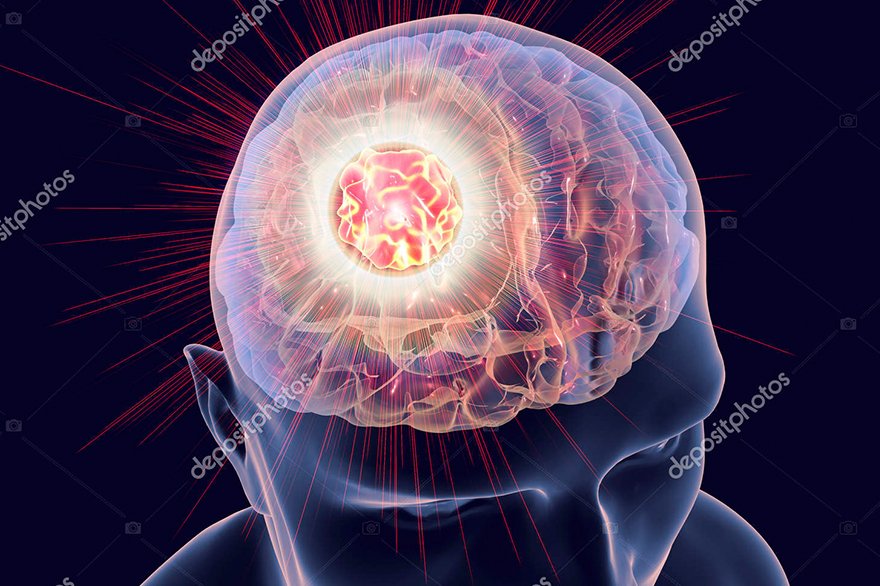Brain tumours can arise from different parts of the brain or nearby structures.
The most common types of brain tumours include:
- Meningiomas: Originate from the meninges, the protective membranes covering the brain and spinal cord.
- Gliomas: Develop in the brain and spinal cord, including subtypes like astrocytomas, glioblastomas, ependymomas, oligoastrocytomas, and oligodendrogliomas.
- Pituitary Adenomas: Tumours of the pituitary gland.
- Acoustic Schwannomas (Vestibular Schwannomas): Affect the nerve responsible for balance and hearing.
- Craniopharyngiomas: Non-cancerous tumours that can affect hormone balance.
- Medulloblastomas: Common in children, these tumours form in the back of the brain and spread through the cerebrospinal fluid.
- Primitive Neuroectodermal Tumours (PNET): Rare, aggressive tumours that originate in embryonic cells of the brain and can develop anywhere within the brain.
- Metastatic Brain Tumours: Tumours that spread to the brain from cancers elsewhere in the body.
Latest Advances in Brain Tumour Treatment
1. Surgical Advances
Surgery remains a cornerstone of brain tumour treatment. Modern techniques, such as neuro-navigation, intraoperative MRI, and 3D mapping, allow for more precise tumour removal while preserving critical brain functions. Neuro-microscopes and microsurgical tools enhance safety and accuracy, reducing complications and improving recovery outcomes. Awake brain surgery is increasingly used for tumours in eloquent areas, allowing real-time monitoring of critical functions during the procedure.
2. Image-Guided Radiation Therapy (IGRT)
For inoperable or residual tumours, IGRT provides highly targeted radiation that minimizes damage to surrounding healthy tissue. Stereotactic radiosurgery (SRS), including Gamma Knife and CyberKnife, is particularly effective for small tumours (under 2.5 cm). This non-invasive approach uses focused radiation to destroy tumour cells while preserving brain structures.
3. Proton Therapy
Proton beam therapy is a cutting-edge radiation treatment that delivers precise radiation doses with minimal impact on surrounding healthy tissue. This technique is especially valuable for treating tumours in delicate areas like the brainstem, optic nerves, and spinal cord.
4. Chemotherapy and Targeted Therapies
Chemotherapy continues to play a role, especially for high-grade tumours like glioblastomas. Recent advances in targeted therapies and immunotherapy are showing promise in treating difficult-to-reach or aggressive tumours. Drugs like temozolomide (for gliomas) and emerging checkpoint inhibitors are being explored to boost the body’s immune response to tumour cells.
5. Immunotherapy
The use of immunotherapy, which leverages the body’s immune system to fight cancer, is becoming a growing focus in brain tumour treatment. CAR-T cell therapy and checkpoint inhibitors are under clinical investigation, with some early results showing improved survival rates for certain types of tumours, particularly glioblastoma.
6. Tumour-Treating Fields (TTF)
An innovative approach, Tumour-Treating Fields (TTF) uses electrical fields to disrupt the division of cancer cells. When combined with chemotherapy, TTF has been shown to extend survival in patients with glioblastoma.
7. Liquid Biopsies and Precision Medicine
Liquid biopsies, which involve testing blood samples for tumour DNA, are improving early diagnosis and monitoring of brain tumours. Precision medicine techniques analyze the genetic makeup of tumours to tailor treatment strategies, allowing for more individualized therapies that target the specific mutations driving the cancer.
8. Enhanced Diagnostic Techniques
Positron Emission Tomography (PET-CT) and functional MRI are playing a crucial role in detecting brain tumours earlier and planning more effective treatments. Advanced imaging can differentiate between tumour types, monitor treatment response, and detect tumour recurrence earlier.
9. Minimally Invasive Techniques
Minimally invasive surgery, including endoscopic approaches, allows for tumour removal through smaller openings. This reduces recovery time, hospital stays, and the risks associated with traditional open surgery.
10. Regular Follow-up and Monitoring
Post-treatment, regular follow-ups using MRI and other imaging techniques are essential to detect tumour recurrence or regrowth. For some tumours, ongoing management may include maintenance chemotherapy, radiation, or participation in clinical trials.
Conclusion
The landscape of brain tumour treatment is rapidly evolving with new technologies and therapies aimed at improving survival rates and preserving quality of life. From advanced imaging and surgical techniques to promising new drugs and non-invasive therapies, patients with brain tumours now have access to more personalized and effective treatment options than ever before. Continued research and clinical trials are critical for further progress in this field, offering hope for better outcomes in the future.
Neurowellness in Bengaluru provides the best Brain Tumour Treatment in Bangalore and consultation and treatment to all neuro problems.
Please visit
Neurowellness
Brain and Spine Clinic
#1224, Ground-Floor, 26th Main, Jayanagar 9th Block
BANGALORE – 560069
Phone No
+91 72596 69911
+91 73490 17701
Website www.neurowellness.in
Facebook www.facebook.com/neurowellness.in/

